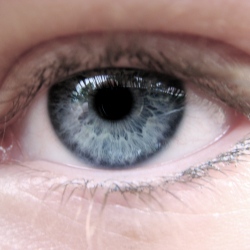
Habitually sleeping less than six hours a night predicts a significant increase in the risk of stroke symptoms, University of Alabama at Birmingham researchers found for middle-age to older adults of normal weight and at low risk for obstructive sleep apnea (OSA).
Their study followed 5,666 people for up to three years.
The participants had no history of stroke, transient ischemic attack, stroke symptoms or high risk for obstructive sleep apnea at the start of the study. The researchers recorded the first stroke symptoms, along with demographic information, stroke risk factors, depression symptoms, and various health behaviors.
Simple eye test
Fortunately, researchers at the University of Zurich have devised a simple eye test that may someday offer an effective way to identify patients who are at high risk for stroke.
The ocular pulse amplitude (OPA) test can reliably detect carotid artery stenosis (CAS), a condition that clogs or blocks the arteries in the neck that feed the front part of the brain — a risk factor for stroke. It could be performed by ophthalmologists during routine exams
The Swiss research team used a device called a dynamic contour tonometer to check the OPA of 67 patients who were assumed to have CAS. The OPA score is calculated by finding the difference between the two pressure levels that occur inside the eye during the two phases of the heartbeat — the systolic and diastolic. (This type of tonometer is not widely used in the United States, Salthough it is in Europe.)
PASCAL Dynamic Contour Tonometer (credit: Tonywirthlin/Wikipedia)
Tonometer detects pressure levels
The tonometer measures the two pressure levels, then instantly computes the patient’s OPA score. When blood flow to the eye is blocked by CAS, there is not much difference between the two pressure levels, so the OPA score is low.
The study confirmed that patients with the lowest OPA scores also had the most seriously blocked arteries.
The researchers used ultrasound exams to corroborate that each study participant had CAS and to detail the severity of his or her blockage.
The researchers say that other than CAS, very few diseases could cause low OPA scores, and that an ophthalmologist could easily rule out these other diseases during an eye exam.
